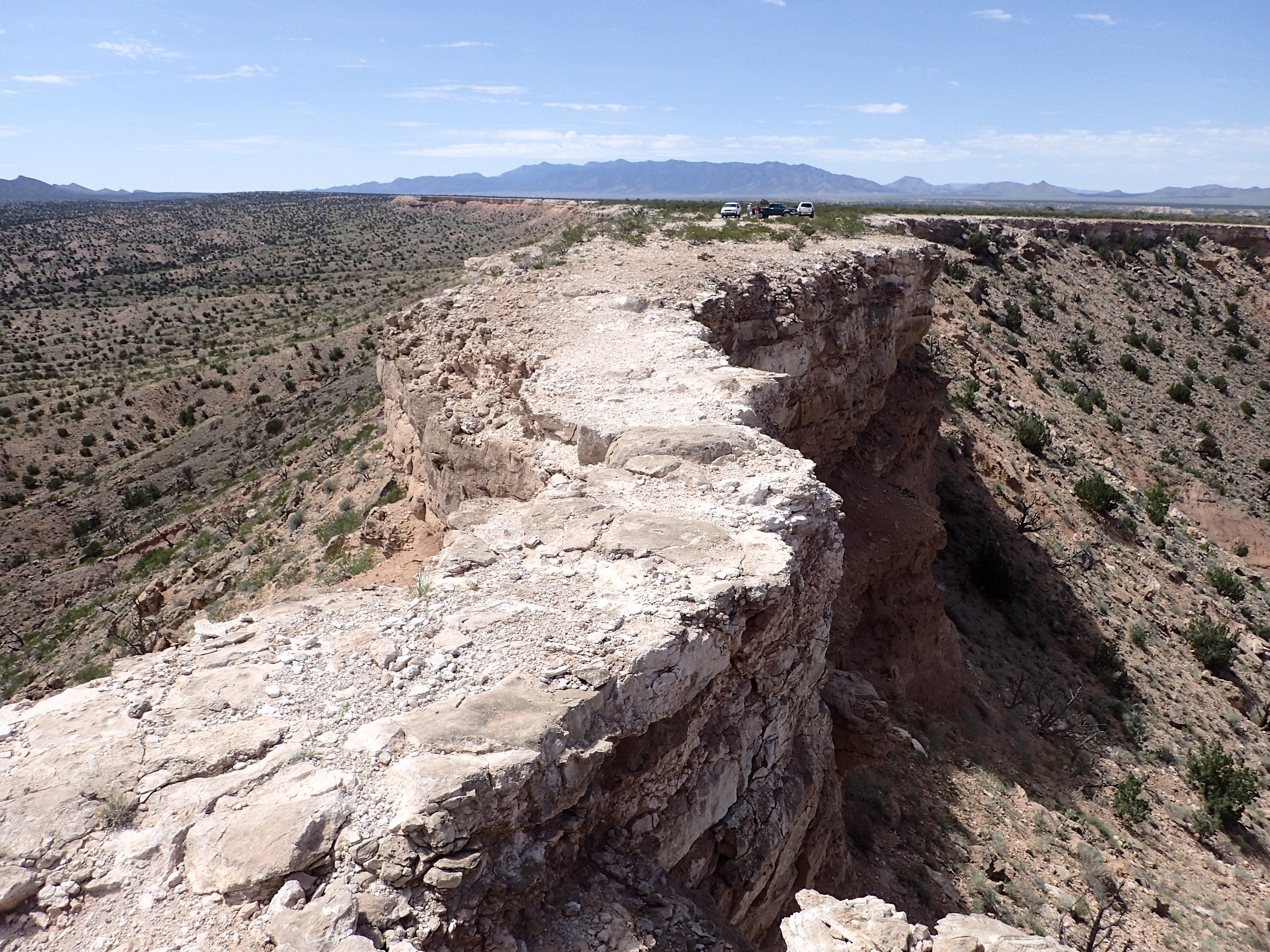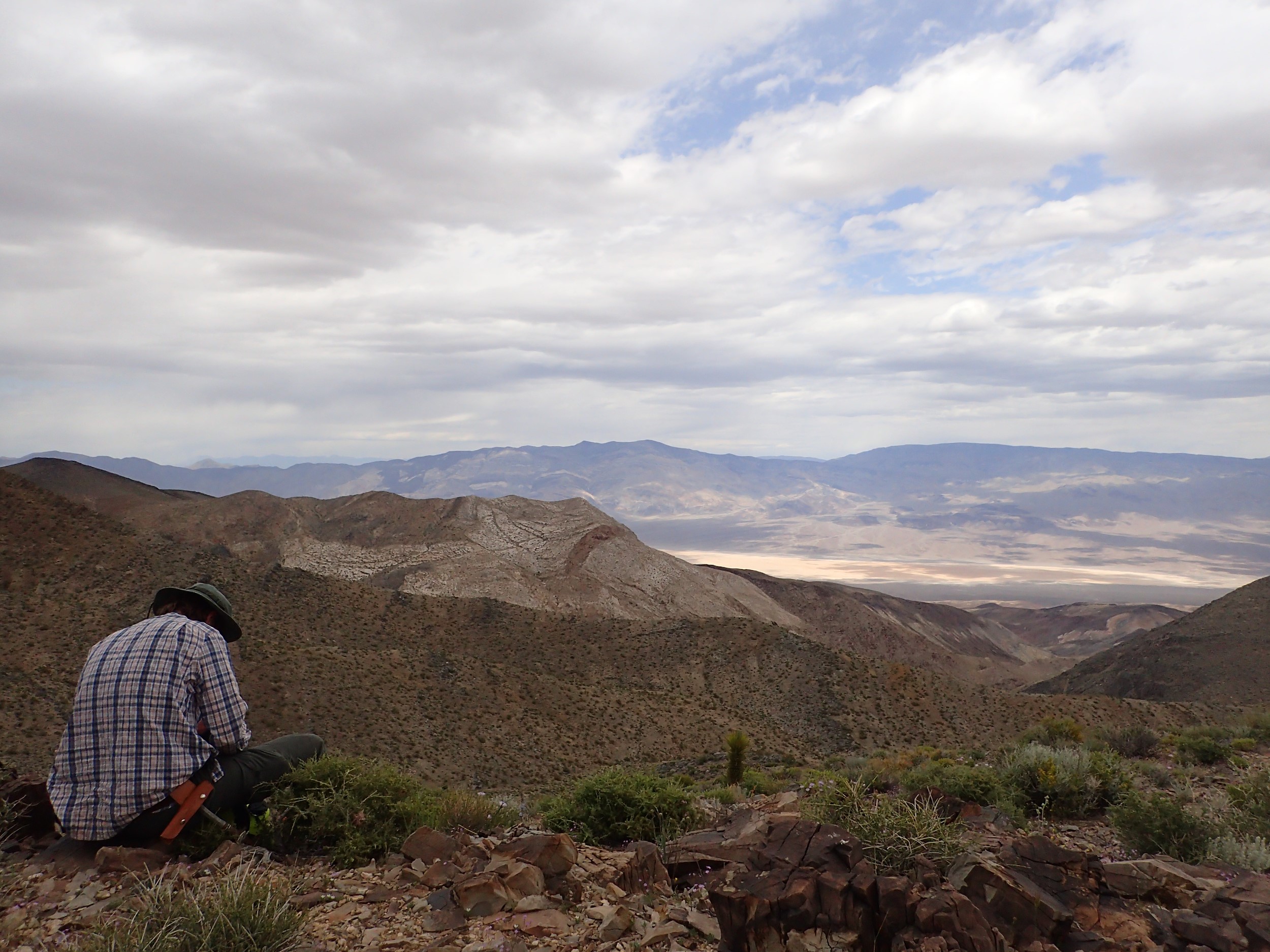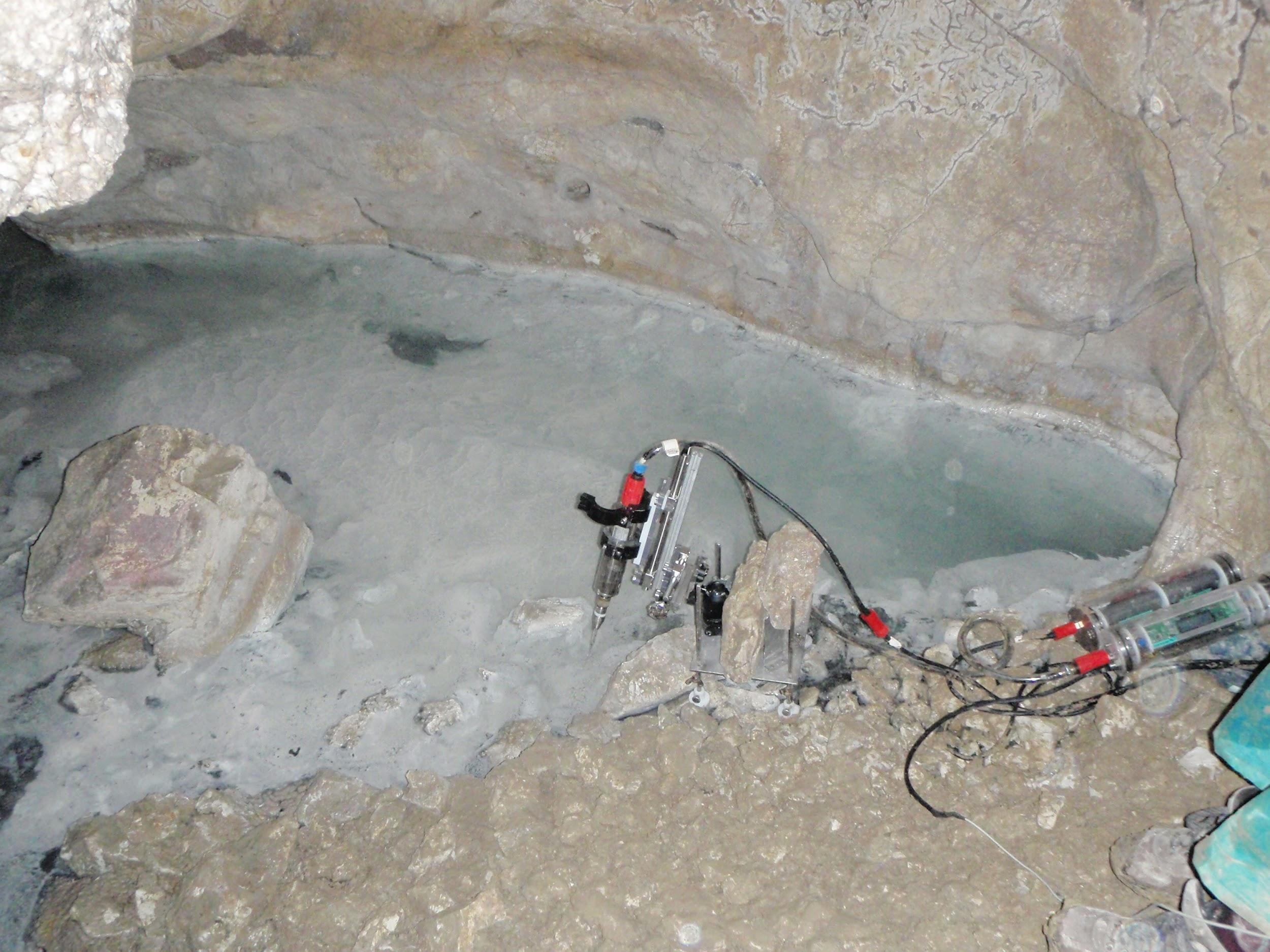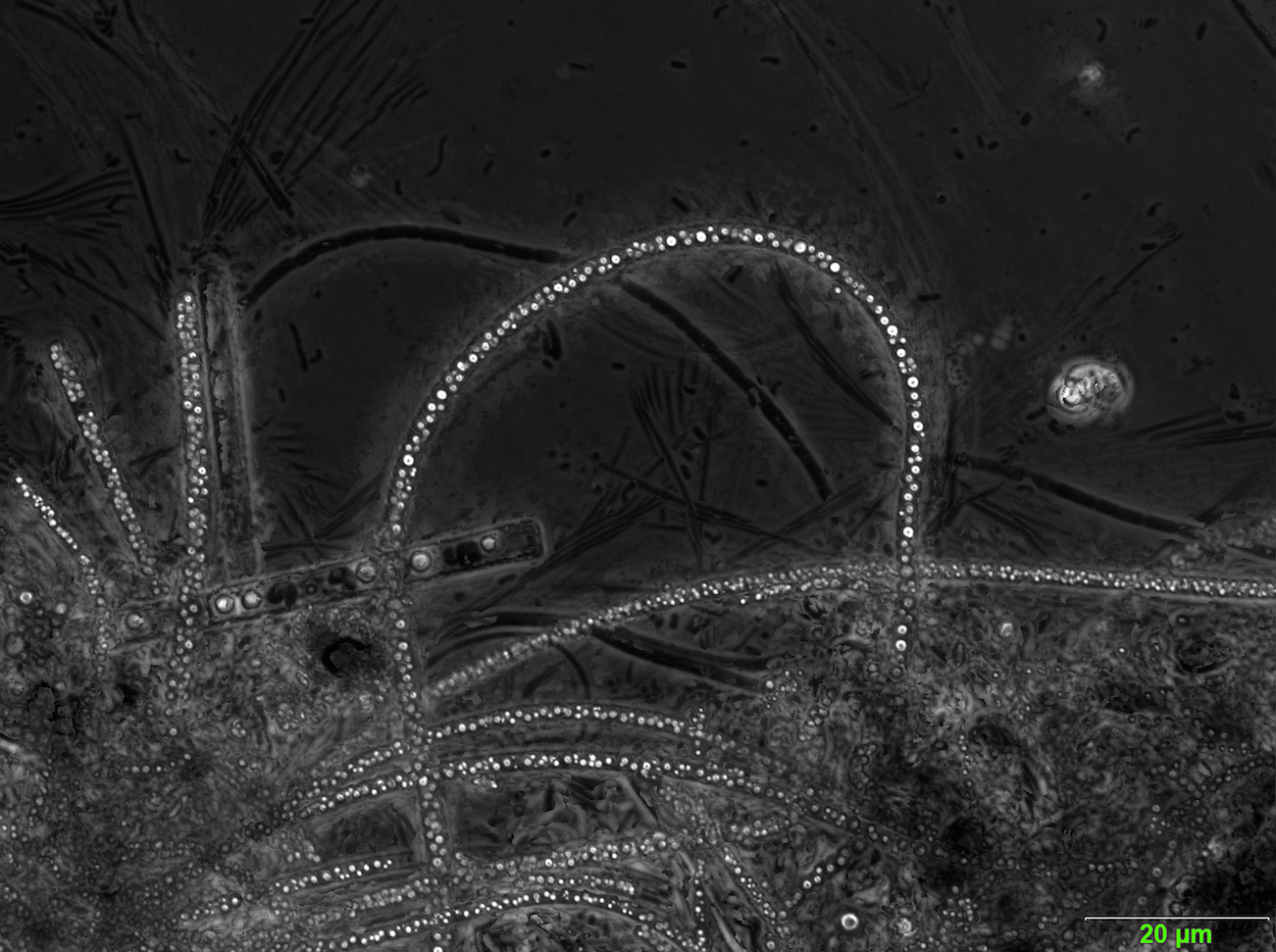Geology and Geochemistry
| HOME | WELCOME | CALENDAR & NEWS | PEOPLE | RESEARCH |
LABS |
ALUMNI |
CONTACTS |
Geology
Program and Research
The Geology program in the E&ES department covers several research areas including surface processes/geomorphology, soil geomorphology, sedimentology, tectonics, mineralogy/petrology, and petroleum geology. We have eight active faculty contributing to Geology program teaching and research.
What is geology?
The undergraduate Geology program at New Mexico Tech covers the traditional subfields of geology including surface processes, mineralogy, petrology, structural geology, sedimentology, and earth history while also emphasizing newer subfields such as computational methods and remote sensing. New Mexico Tech is surrounded by exceptional geological outcrops, and students in our undergraduate program have the opportunity to master field interpretation and mapping skills in a world-class natural laboratory.
Our Geology graduate and research program focus areas include continental tectonics, geodynamics, computational geoscience, sedimentology, surface processes, sediment transport dynamics, soil geomorphology, and experimental petrology.
Faculty and courses taught in the Geology program
Bruce Harrison, Soil Geomorphology
- Intro to Soils
- Advanced Soils
- Field Methods
- Surficial Processes
Ryan Leary, Sedimentology and Tectonics
- ERTH 206 Earth History (co-taught with Dan Jones)
- ERTH 301 Sedimentology and Stratigraphy
- ERTH 447/GEOL 547 Depositional Systems and Basin Analysis
- ERTH 454/GEOL 554 Tectonics
- GEOL 591 Adnvanced Depositional Systems
Dan Jones, Geomicrobiology, Caves and Karst
- ERTH 206 Earth History
- ERTH 289 Introduction to Caves and Karst
- GEOL 5XX Geomicrobiology
- GEOC 572 Special topics in Cave and Karst Processes
Kate Leary, Fluvial Geomorphology/Hydrology
- ERTH 101 Introduction to Earth Science
- GEOL 2230 Surface Processes
- GEOL 562/HYD 562 Fluvial Geomorphology
- HYD 508 Flow and Transport
Laura Waters, Igneous Petrology & Volcanology
- ERTH 380: Igneous and Metamorphic Petrology
- GEOC 589: Principles of Geochemistry
John Naliboff, Geodynamics and Computational Geoscience
- ERTH 101 Introduction to Geology
- GEOL 559/GEOP 559 Geodynamics
- GEOL 501/GEOP 559 Computational Methods
Jolante van Wijk (NMT Research Professor; LANL), Geodynamics, Basin Analysis, Petroleum Geology
Gary Axen (NMT Professor Emeritus), Structural Geology, Tectonics
Research
Sedimentology and Tectonics: This research group, led by Ryan Leary, seeks to understand the tectonic evolution of orogenic systems around the world through the lense of the sedimentary record. Because orogens (mountain belts) are quickly eroded after they form, they are not long-lived geologic features and are not well preserved in the rock record. The material eroded from mountain belts is however, often deposited and archived in adjacent sedimentary basins, and the study of these basins can reveal the timing, geometry, causes, and paleoclimate associated with past mountain building events. Current study areas include the Ancestral Rocky Mountains system, the Anadarko Basin, the Miocene-present geologic evolution of the Rio Grande Rift, and the Cenozoic evolution of the orogens associated with the India-Asia Collision in southern Tibet.


Geomicrobiology: The study of microbe-mineral interactions. Microbes catalyze many important geochemical transformations in the environment, and have been doing so for more than 3.5 billion years. Active geomicrobiology research in Dr. Dan Jones’ lab includes microbial sulfur cycling, microbe-mineral interactions in cave systems, and bioremediation and microbial contaminant transformation. (See the websites for the Geobiology Program and Cave and Karst Studies Program.)

